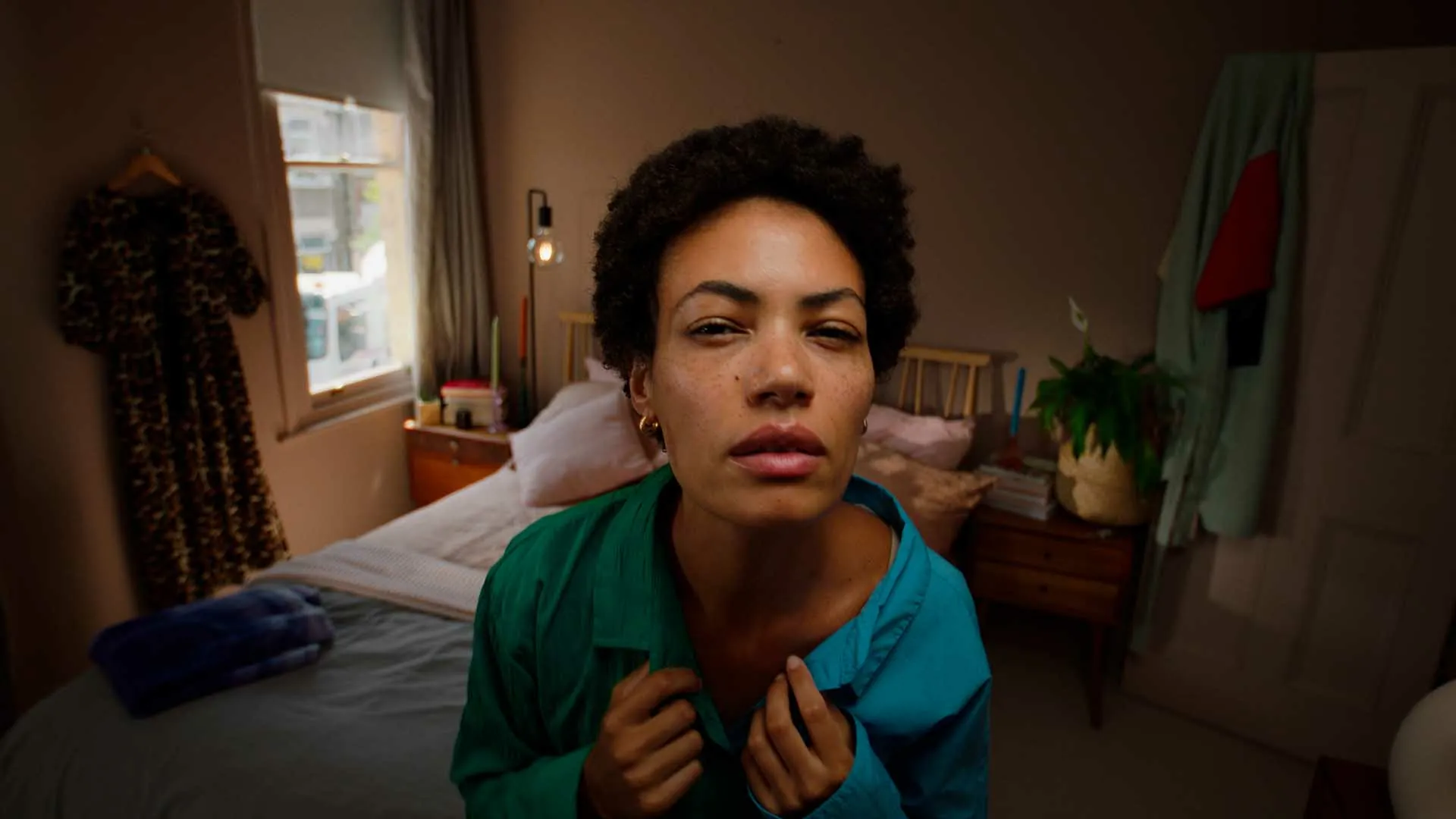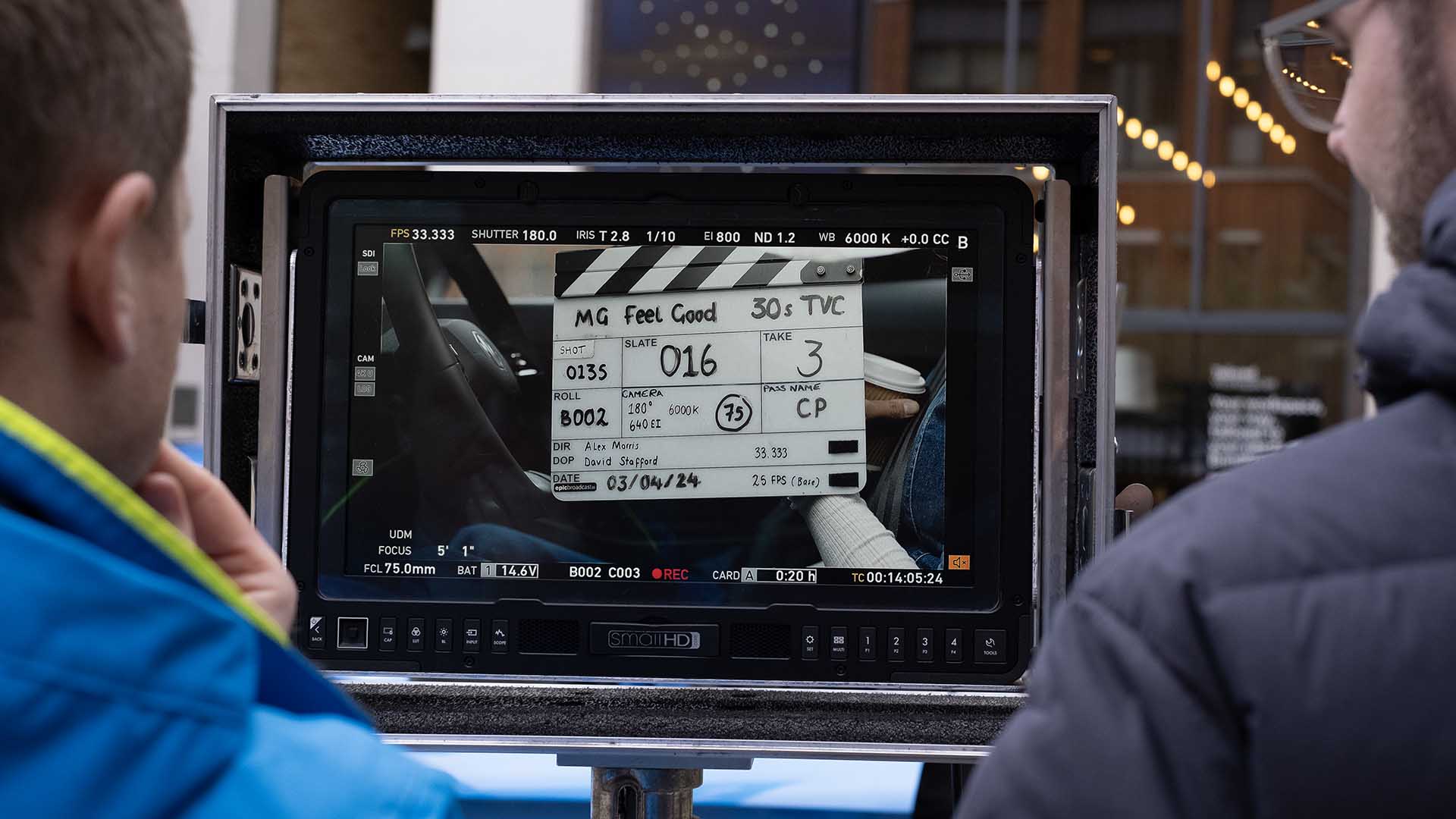
What Makes A Good Advert?
TV advertising is still one of the best ways to get your brand out there and drive sales – but let’s be honest, grabbing (and keeping) people’s attention isn’t as easy as it used to be.
These days, viewers are probably trying to win an argument in the group chat, Google whether that actor really was in Game of Thrones, or smashing through another level of Royal Match during your ad break. Cutting through the noise takes more than just a flashy idea. A great TV ad isn’t just about looking slick, it’s about understanding what makes people tick, what sparks emotion, and how to make every second count.
As an experienced video production company, we know that crafting an advert that sticks is part art, part science, and a little bit of magic. In this post, we’ll break down the creative and strategic elements that make TV ads memorable, from emotional hooks that pull viewers in to the power of sound that keeps them engaged. Whether you’re a marketer planning your first campaign or part of an agency looking to sharpen your process, you’ll find practical insights and real-world examples to help create ads that stand out and get results.
The Science Behind Effective TV Adverts
If you’ve ever wondered why certain ads stay with you long after they air, the answer lies in the subconscious. According to Neuro-Insight’s Creative Drivers of Effectiveness study, 90% of decisions are made in the subconscious mind. This means that the ads that perform best aren’t necessarily the loudest or flashiest, they’re the ones that evoke a feeling or trigger a memory.
Emotional engagement isn’t just a nice-to-have, it’s a key driver of personal relevance and memorability. Research shows that ads with strong emotional impact deliver:
+15% more personal relevance
+24% greater long-term memorability
When you create an ad that viewers connect with on an emotional level, it stays with them. And that’s where the magic happens, because when the time comes to make a purchasing decision, that emotional connection can translate directly into sales.
Key Creative Drivers for Effective TV Ads
So, what makes a good advert that truly resonates with audiences and drives long-term brand recall? Crafting a TV advert that sticks isn’t just about flashy visuals or celebrity cameos – it’s about understanding how viewers engage with content and, just as crucially, how often they don’t.
Through extensive analysis of over 150 UK TV ads, researchers from Neuro-Insight and Thinkbox have identified five key creative drivers that consistently boost advert performance. These elements aren’t gimmicks – they’re backed by data showing that when applied correctly, they significantly enhance personal relevance, emotional impact, and long-term memorability.
In a world where multitasking and distraction dominate, effective TV adverts aren’t just seen – they’re felt and remembered. Let’s break down the core creative elements that set successful adverts apart from the rest.
Showcase, Don’t Shout
Ads that subtly weave the product into the story perform 1.4x better than those that take an aggressive sales-driven approach. Modern audiences are savvy, they can spot a hard sell a mile away, and they’ll tune it out. Instead, the most effective ads integrate the product naturally into the narrative.
Why it works: When a product fits seamlessly into the storyline, it feels more authentic and memorable.
Example: Burger King’s “We Give Up” ad gently showcases the product as part of the humour, creating a lighthearted yet effective campaign.
Burger King | We Give Up
People Are Paramount
When it comes to creating effective TV adverts, one thing remains clear – people connect with people. No matter how clever the concept or eye-catching the visuals, ads that feature relatable human stories consistently outperform those that don’t.
Research from Neuro-Insight’s Creative Drivers of Effectiveness (2023) found that TV adverts showcasing people – whether through real-life characters, actors, or even animated personas – drive:
+15% higher personal relevance
+24% greater long-term memorability
These figures highlight a fundamental truth: audiences are more likely to engage with ads that reflect their experiences, emotions, and relationships. Whether it’s humour, nostalgia, or empathy, the presence of people adds an emotional layer that resonates on a deeper level.
Why People in Ads Resonate
Emotional Connection:
Humans are wired to respond to emotional cues. A heartfelt interaction, a funny mishap, or even a simple smile can evoke feelings that stay with viewers long after the advert ends. Ads that tell human stories tap into universal experiences, making the brand more relatable and memorable.
Relatability and Identification:
When people see themselves – or someone like them – in an advert, it creates a sense of identification. This boosts personal relevance and increases the likelihood of action. Whether it’s parents juggling family life or young adults seeking adventure, ads that mirror their lifestyle foster a stronger brand connection.
Trust and Authenticity:
Featuring real people or authentic moments builds trust. Modern audiences are savvy and can spot overly polished, sales-driven ads. By using genuine interactions and characters, brands appear more credible and approachable.
Why it works: We naturally empathise with human stories, making these ads more engaging and easier to recall.
Example: Audible’s Breakdown beautifully captures the ups and downs of life in a way that’s both funny and deeply relatable. We’re not strangers to bad luck, but this ad highlights how laughter can turn things around. It’s a light yet poignant reminder of the little things that keep us going.
Audible | Breakdown
The Power of Sound
When we think about TV adverts, the first thing that often comes to mind is the visual – the vibrant colours, engaging characters, or clever camera work. But in reality, one of the most powerful and underappreciated drivers of advert effectiveness is sound.
Sound can capture attention, evoke emotion, and drive home a message even when the viewer’s eyes are elsewhere. In a world where multitasking is the norm, harnessing the power of sound ensures your advert can break through distractions and leave a lasting impression.
Recent studies into advertising effectiveness, like the Creative Drivers of Effectiveness (2023) report, highlight just how critical sound is.
TV viewers are 20% more likely to remember what they hear over what they see during moments of distraction.
This aligns with findings from ITV’s ethnographic research, where families watching TV at home often engaged in other tasks. Despite this, viewers frequently responded to auditory cues, singing along to jingles or repeating catchphrases, even when their visual attention was elsewhere.
According to Neuro-Insight, 90% of decisions are made in the subconscious, meaning that TV adverts need to resonate emotionally and subliminally to drive long-term brand recall. Sound is uniquely equipped to do this.
Auditory stimuli trigger emotional responses faster than visual stimuli, activating memories and associations that stick with viewers. This is especially powerful in the form of familiar jingles or brand idents, like the Intel chime or McDonald’s whistle. These can cut through the clutter and create instant recognition.
The multitasking nature of modern TV viewing means advertisers can’t rely on visuals alone to engage audiences. This is where sound steps in.
Our ears are open even when our eyes are closed (or glued to our phones). Sound grabs attention and can refocus attention on the TV in lieu of the visuals.
Finally, when viewers do look away from the screen, sound carries the narrative forward, ensuring the core message is still delivered.
Why it works: When visual attention drifts (as it often does), sound bridges the gap. Even if a viewer looks away, a catchy jingle or familiar voice keeps them engaged.
Example: Go Compare became both loved, and hated, when it launched its series of adverts with the now infamous singing Tenor. The jingle became a piece of pop culture, and its recognisable delivery cuts through any distraction, bringing attention back to the advert.
Go Compare | Tenor
Brand Recognition Wins
Your logo, colours, and slogans aren’t just decorative, they’re powerful brand assets that can boost engagement. Ads that subtly integrate brand assets drive +9% more emotional impact.
Why it works: Consistent use of brand colours and logos reinforces identity without feeling forced. This visual reinforcement helps viewers associate key moments in the ad with the brand itself.
Example: Cadbury’s Gorilla almost didn’t make it onto TV. After all, there is no mention or even sight of a chocolate bar during the advert. However, it became an absolute classic and is undeniably a Cadbury’s advert due to the distinct brand purple throughout.
Cadburys | Gorilla
Timing is Everything
In TV advertising, timing can make or break the impact of an advert. It’s not just about when the advert airs, but how long key elements, like branding and call-to-actions, are on screen. Research consistently shows that TV adverts with well-timed messaging, pacing, and branding create stronger emotional connections and better recall.
The Creative Drivers of Effectiveness (2023) report highlights how subtle adjustments to timing can significantly boost performance:
+11% emotional impact when final branding is shown for at least three seconds.
+11% personal relevance when the advert allows viewers to experience conceptual closure, the brain’s way of processing and concluding a narrative.
3% increase in long-term memorability when branding moments are extended.
In essence, ads that allow room to breathe ,with well-placed brand reveals and lingering visuals, stay with viewers far longer.
Why it works: This taps into the concept of “conceptual closure” – the brain pauses and processes the ad fully, leading to stronger recall.
Example: Coca Cola Masterpiece is a playful piece that keeps viewers engaged through the creative visuals but keeps the brand front and centre. More importantly, there is a satisfying conceptual closure at the end.
Coca Cola | Masterpiece
Practical Tips for Crafting Your TV Advert
Now that we know what works, how can you and your chosen video ad agency apply these insights to your next project? Here are some practical takeaways:
• Keep It Simple: Focus on one clear message. Complexity leads to cognitive overload, and audiences will tune out.
• Tap Into Emotion: Ads that make viewers laugh, cry, or feel nostalgic create stronger memories.
• Prioritise Sound Design: Video production is only half of the creative process. Don’t underestimate the role of music and voiceovers. Think of sound as your secret weapon.
• Make Branding Subtle but Memorable: Weave brand colours, logos, and slogans into the ad naturally, but don’t let them dominate the creative.
• Time Your Branding: Ensure the brand appears on screen for at least 3 seconds at the end of the ad to enhance recall.
What’s Next?
Creating an effective TV advert isn’t just about flashy visuals or clever taglines, it’s about tapping into the subconscious and making viewers feel something. By focusing on emotion, using sound strategically, and weaving branding naturally into the story, marketers and agencies can craft ads that leave a lasting impression.
At Lambda Films, we’re an experienced TV advertising agency. We create TV adverts that not only capture attention, but drive results. Whether you’re starting from scratch or looking to refine your approach, we’re here to help turn your vision into reality.
Ready to create something unforgettable? Get in touch today and let’s start crafting your next TV campaign.



